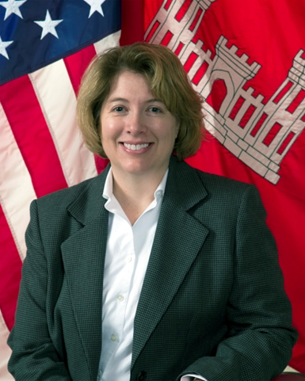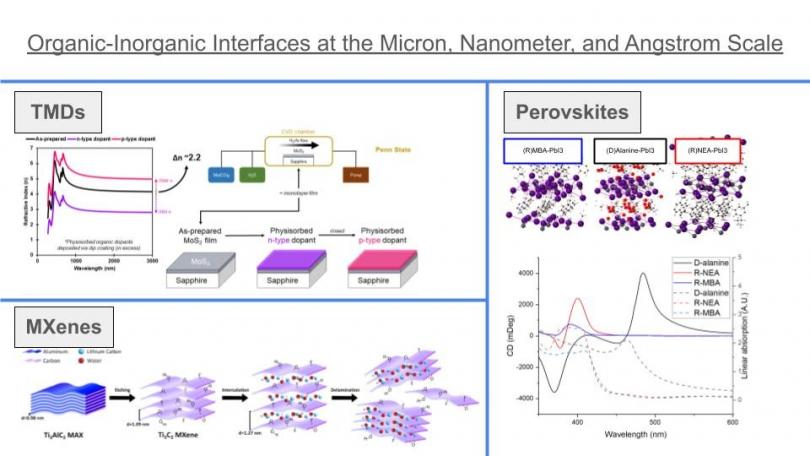Developing tools for studying how soluble methane monooxygenase catalyzes strong C-H and N-H bond functionalization reactions
Abstract: Soluble methane monooxygenase (sMMO) catalyzes the cleavage of the strong C-H bond of methane during the O2-dependent conversion to methanol. sMMO generates nature’s most powerful oxidizing agent, a Fe2-(mu-oxo)2 species termed Q, for this reaction. The sMMO catalytic cycle is strictly regulated to ensure that methane is afforded preferential access to Q, as Q is capable of oxidizing any molecule with a C-H or C=C bond that gains access to the active site.
This methane selection process is ascribed to a small-molecule tunnel to the active site that discriminates based upon the molecular size of the substrate. The experimental validation of this regulatory model is held back by the inability to mutate the hydroxylase protein (MMOH), which harbors the active site, in a site-specific manner. We have overcome this obstacle by recombinantly expressing MMOH in E.coli through co-expression with two other proteins, MMOG and MMOD, from the sMMO operon.
This effect results in a large yield of a fully functional MMOH protein for sMMO structure-function studies. The tools used to enable this breakthrough are broadly applicable and benefit the soluble production of other enzymes. A vignette will also be provided of our investigation into strong N-H cleavage chemistry based upon the promiscuous conversion of ammonia to hydroxylamine by sMMO.

Bio: My love for enzymology was fostered during my doctoral studies in John D. Lipscomb’s laboratory at the University of Minnesota-Twin Cities. This research was focused on investigating the chemical mechanism of the soluble methane monooxygenase (sMMO) enzyme, which catalyzes the oxygen dependent oxidation of methane to methanol as part of methanotroph C1 metabolism. I came to appreciate how enzymes are masterful in catalyzing challenging chemical conversions.
I also learned an important lesson here that biochemical studies are only as good as the enzyme that is purified (homogeneous, highly-active preparations). This was a hard lesson to learn as I found myself in the fifth year of a Ph.D. with no positive results to report. I hope that my journey in science shows graduate students who are struggling with challenging research projects that their research is just a few good ideas and experiments away from giving up its secrets.
Close to the end of my doctoral research, I had gotten involved in a continuous-flow resonance Raman study of the photolabile, methane reactive intermediate in sMMO. Since this was a brute-force experiment that consumed thirty grams of purified protein, I decided to continue my sMMO research as a post-doctoral scholar in the same laboratory to ensure its success.
During this post-doctoral research, I broadened my research training through a focus upon elucidating the mechanisms of catalytic regulation enforced by the protein structure and protein-protein interactions. These regulatory schemes ensure that methane is chosen as the native substrate (sMMO will oxidize any organic compound that enters its active site) and that high-valent iron intermediates are not aberrantly quenched by mis-timed electron transfer from an accessory reductase protein.
This period of my research training taught me that in as much as the high-valent metal-oxygen intermediates capture the limelight, it is these mechanisms of regulation that truly showcase the catalytic prowess of enzymes. These two facets of catalysis, namely chemical reactivity and its regulation, are the focus of research in my laboratory. The two model systems under study include the sMMO enzyme and the integral membrane stearoyl-CoA desaturase (SCD) enzyme, which catalyzes the desaturation of fatty acids in eukaryotes.
Both these enzymes utilize dinuclear iron cofactors to activate oxygen and generate powerful oxidants in order to functionalize strong C-H bonds, while preventing oxidative damage from reactive oxygen species resulting from uncoupled enzyme turnovers. The goal of this research is to inform synthetic catalyst design for strong C-H bond functionalization chemistry and to elucidate the general tenets of enzyme action.



 Lauren DePue, Ph.D., is the director of the
Lauren DePue, Ph.D., is the director of the  Dr. Elizabeth Ferguson serves as an Army Senior Science Technical Manager and is the Lead Technical Director (TD) for the Army Installations and Operational Environment (IOE) Business Area at the U.S. Army Engineer Research and Development Center (ERDC) in the Environmental Laboratory, Vicksburg, Mississippi. As Lead IOE TD, Elizabeth is responsible for programmatic direction of the research areas of military Infrastructure (the built environment) and well as the natural environment in both installations and operational environments.
Dr. Elizabeth Ferguson serves as an Army Senior Science Technical Manager and is the Lead Technical Director (TD) for the Army Installations and Operational Environment (IOE) Business Area at the U.S. Army Engineer Research and Development Center (ERDC) in the Environmental Laboratory, Vicksburg, Mississippi. As Lead IOE TD, Elizabeth is responsible for programmatic direction of the research areas of military Infrastructure (the built environment) and well as the natural environment in both installations and operational environments.  Bio: Erin L. Ratcliff is a full professor in the School of Materials Science and Engineering and the School of Chemistry and Biochemistry at the Georgia Institute of Technology and holds a joint appointment at the National Renewable Energy Laboratory. She earned a B.A. in chemistry, mathematics,and statistics in 2003 from St. Olaf College in Northfield, Minnesota, and a Ph.D. in physical chemistry from Iowa State University in 2007. After completing a postdoc at the University of Arizona (2007 – 2009), she served as a research scientist and research professor in the Department of Chemistry and Biochemistry (2009 – 2014). She was previously an assistant and associate professor in the Department of Materials Science and Engineering and the Department of Chemical and Environmental Engineering at the University of Arizona (2014 – 2024). She joined the faculty at Georgia Tech in 2024.
Bio: Erin L. Ratcliff is a full professor in the School of Materials Science and Engineering and the School of Chemistry and Biochemistry at the Georgia Institute of Technology and holds a joint appointment at the National Renewable Energy Laboratory. She earned a B.A. in chemistry, mathematics,and statistics in 2003 from St. Olaf College in Northfield, Minnesota, and a Ph.D. in physical chemistry from Iowa State University in 2007. After completing a postdoc at the University of Arizona (2007 – 2009), she served as a research scientist and research professor in the Department of Chemistry and Biochemistry (2009 – 2014). She was previously an assistant and associate professor in the Department of Materials Science and Engineering and the Department of Chemical and Environmental Engineering at the University of Arizona (2014 – 2024). She joined the faculty at Georgia Tech in 2024. 
